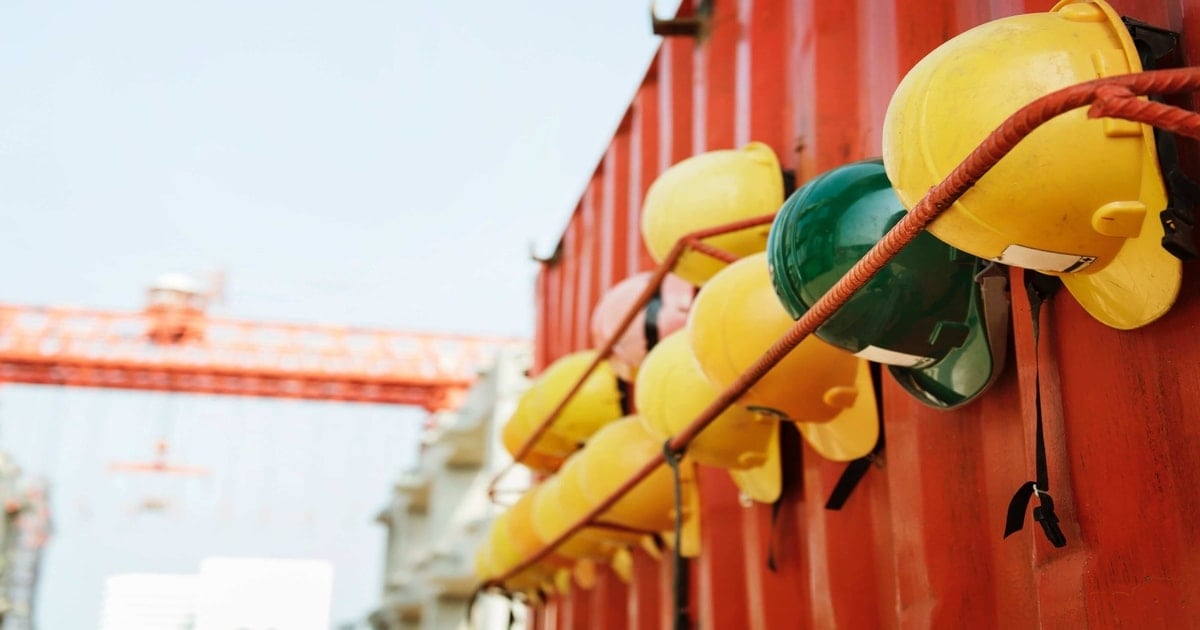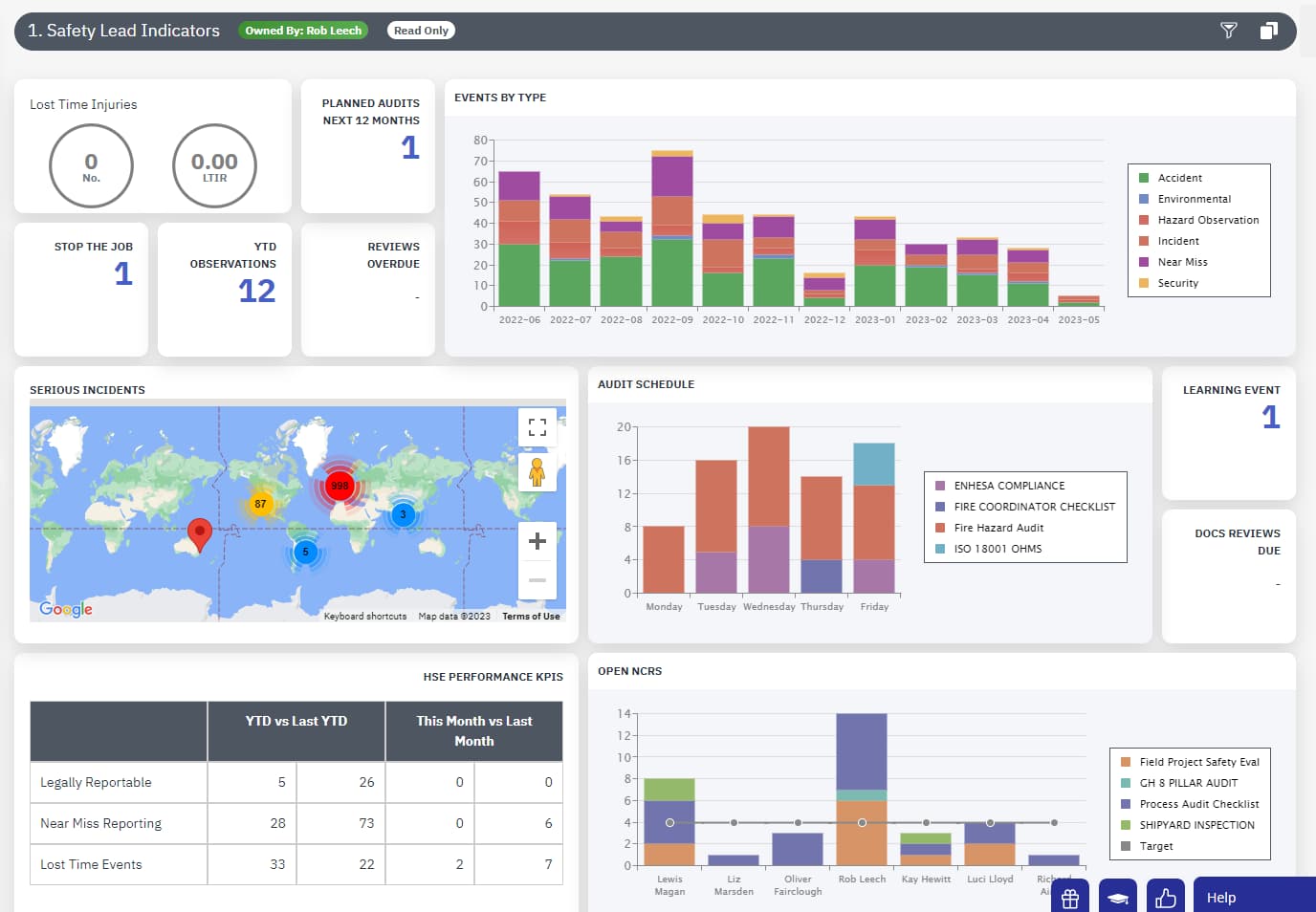The HSE’s 5 Steps to Risk Assessments

Health, Safety, and Environment (HSE) risk assessments are an important part of any business. They help identify potential hazards and take proactive steps to mitigate risks in the workplace.
Performing a successful HSE risk assessment can be a challenging task, but it is essential to ensure the safety and well-being of everyone on your team.
Risk management is a methodical procedure for reducing the health and safety risks brought on by workplace hazards. Let’s compare the 5 steps to completing a risk assessment, as laid out by the HSE in 2019, and compare them against 2014 guidelines.
The legal requirement to produce risk assessments, and to review them when circumstances change is not new although in our post pandemic world there is now more scrutiny of risk assessments than ever – by customers wanting to find out if it is safe to use a business, by employees returning to the workplace, and by regulators who continue to focus on the applicability of risk assessments.
CHAPTER 1
Identify Hazards
Some health and safety risk assessment schemas present people with a checklist of hazards to identify, making it more likely that significant hazards could be left out because they aren’t on the checklist. Perhaps dropping “the” from this step signifies that we should look more widely for hazards, identifying any reasonably foreseeable cause of harm.
For COVID-19 risk assessments, the obvious hazard was the virus itself, but new ways of working will introduce new hazards. For example, reduced staffing levels can increase lone working and workload, while one-way systems implemented to enable distancing can increase manual handling and emergency escape hazards.
To achieve consistency and efficiency across the many risk assessments that are likely to be carried out by multiple different people, you may consider a digital platform or app such as EcoOnline’s Risk Assessment Module.
This process may also involve walking through the facility and noting down any potential hazards or areas of concern. It is important to consider both physical and environmental hazards, such as wet floors or excessive noise levels. It is also important to note down any known incidents that have occurred in the past, as these can help inform future risk assessments.
No longer a step: Identify who will be harmed
Omitting this step does not mean the HSE no longer cares about who will be harmed – it means the opposite. It has always been the case that to do a suitable and sufficient risk assessment you had to think about people at every step.
You couldn’t identify all the hazards if you didn’t think about contractors, visitors, and members of the public, as well as your employees.
You couldn’t evaluate risk without considering vulnerable people, such as expectant and new mothers, or people with disabilities.
You couldn’t select appropriate controls without asking if younger workers or workers with English as a second language would need more support to apply them.
CHAPTER 2
Assess the Risks
Having identified a hazard in step 1, make sure you know who could be harmed and how, and what you are already doing to control the risk. Then move on to managing the controls.
Advice on COVID-19 reflected this emphasis. Alongside the risk assessment requirement, the other requirements to working safely during the coronavirus pandemic were about practical controls: working from home, implementing hygiene procedures, maintaining separation, and managing the transmission risk.
Another positive outcome from our COVID-19 learnings is that employers should consult with workers when it comes to risk assessments.
Worker engagement makes for more effective risk controls, so it is good news that it is being addressed explicitly.
This involves determining how likely it is that an incident will occur as a result of a particular hazard and what kind of harm could be caused by it. Risk assessments should also include information on how best to control the risks associated with each hazard – this could include providing additional training or introducing new equipment or procedures.
Once all potential hazards have been identified, it’s time to assess the level of risk associated with each one. This involves considering both the severity of injury or harm that could be caused by each hazard as well as its likelihood of occurrence.
For example, a hazardous material spill may have a high level of risk due to its potentially severe consequences but would be unlikely to occur if proper storage protocols are in place. Knowing the level of risk associated with each hazard can help inform decisions about which preventive measures should be taken and what resources should be allocated for handling incidents if they do happen.
CHAPTER 3
Control the Risks
Once the level of risk associated with each hazard has been assessed, it is important to put controls in place to mitigate those risks.
This could include implementing proper safety protocols or providing personal protective equipment (PPE) such as hard hats or steel-toed boots for employees working in hazardous areas.
Other common controls include introducing training programs on safe work practices or developing emergency response plans for dealing with unexpected incidents quickly and efficiently.
Surveys and refresher training sessions may be required to remind employees of any existing hazards or inform them of new ones – take a look at EcoOnline’s Learning Management System (LMS) to learn more.
CHAPTER 4
Record Your Findings
Although the HSE provides template tables if people wish to use them, it has never insisted on this format before 2019.
Only three things need to be recorded: the hazards, who might be harmed and how, and what you are doing to control the risks. This last item should include (or link to) information about who will carry out the actions, and when.
Where controls are already in existing documents such as method statements, or in existing systems such as computerised checklists, these can be referenced rather than repeated. Current HSE advice emphasises “Do not rely purely on paperwork as your main priority should be to control the risks in practice.”
It’s advisable to use software to achieve seamless risk assessments. The EcoOnline platform offers digital risk assessments as well as other must-have safety modules.
Making sure that the templates you use are universal is of critical importance. This will allow EHS teams to roll them out across the organisation and make sure that data can be tallied to evaluate the overall safety performance before and after the controls were implemented.
CHAPTER 5
Review the Controls
The Management of Health and Safety at Work Regulations require a risk assessment to be reviewed if there is reason to suspect that it is no longer valid or if there has been a significant change “in the matters to which it relates”.
Some organisations regarded this as an annual or even biennial event. Risk assessments were pulled out of a folder after two years, updated with the newest company logo, re-dated, and filed for another two years.
While the requirement to review the risk assessment remains, this rewording since 2019 is telling companies to do more than that. Rather than waiting for a significant change or other “reason to suspect that it is no longer valid” the onus is on the employer to demonstrate that the controls are working.
Some controls need to be reviewed more often than others. For example, if one of your controls is a pre-use user check of a ladder, you might need to review this by checking with a sample of people using ladders each month that they understand what to do, and have the time to do it. A formal six-monthly ladder inspection might need to be recorded twice a year.
Ideally, controls should be reviewed frequently, or when an incident occurs. Certain events may have a cascading impact on other controls, and the new information may require the company to change the way it approaches risk management.
That is one of the main reasons why EHS teams need to be proactive and review controls consistently. This also means that workers need to be trained about the new findings and made aware if necessary.
Digitised risk assessments often feed into dashboards and reports, such as those offered by EcoOnline, meaning that Health & Safety Managers can spot patterns and implement the necessary controls. Book a demo today.





